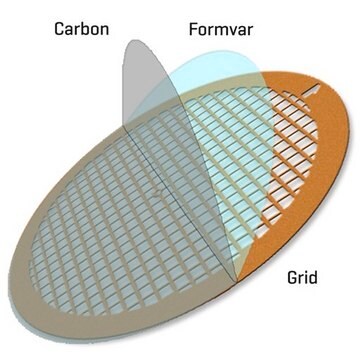AB3200
Anti-LIM-1 Antibody
Chemicon®, from rabbit
Synonym(s):
Anti-Anti-LIM-1, Anti-Anti-LIM1
About This Item
Recommended Products
biological source
rabbit
Quality Level
antibody form
purified immunoglobulin
antibody product type
primary antibodies
clone
polyclonal
species reactivity
human, frog, fish, mouse
manufacturer/tradename
Chemicon®
technique(s)
immunocytochemistry: suitable
immunofluorescence: suitable
immunohistochemistry: suitable (paraffin)
immunoprecipitation (IP): suitable
western blot: suitable
NCBI accession no.
UniProt accession no.
shipped in
wet ice
target post-translational modification
unmodified
Gene Information
human ... LHX1(3975)
Specificity
Immunogen
Application
Our photo was produced from immersion fixation of chicken embryos in cold 4% PFA for 15-30 minutes, then sectioning was performed on a cryostat.
Works on paraffin embedded sections when sections are either lightly PFA fixed or fixed with acetone, ethanol or fixative suggested below.
SUGGESTED IMMUNOHISTOCHEMISTRY PROTOCOL FOR AB3200
The best fixative is MEMFA. 10X stock solution for MEMFA: 1 M MOPS, 20 MM EGTA. 10 mM MgSO4, 38% Formaldehyde. Fixation 1 hour, 2 x 15 min methanol. Following this protocol embryos may be stored in methanol at -20°C indefinitely or immediately embedded in paraplast. Best results on paraffin sections 6-10 micron thick.2) Staining following deparaffinization in xylene and a row of alcohol wash two times in water. Block in 2% Boehringer Mannheim reagent in 0.1 M maleic acid, pH 7.5, 150 mM NaCl for one hour at room temperature.3) Dilute the AB3200 in same blocking reagent and incubate overnight at 4°C or for at least 5 hours. Wash three times in PBS, 10 min each.4) Incubate with alkaline phosphatase conjugated secondary antibody (for example Chemicon Catalog Number AP132A. Develop with BCIP/TNBT (Chemicon Catalog Number ES007-100ML).5) For sections always use Digene silanated slides or Superfrost plus from Fisher as some times you may need to boil sections in 6 M urea for 5-6 min. in microwave at 80% power following deparaffinization to increase signal. That is especially useful if tissues were fixed in PFA.6) Sometimes it is necessary to predeplete antibody on hyperfixed embryos to lower background (especially for staining species other than frog and for whole-mounts). Procedure: hyperfix frog or fish embryos in MEMFA for 36-48 hours at RT 30-50 embryos. Wash 2 X in methanol (see above). Apply antibody in final dilution in blocking reagent for one hour on rocking table. Collect super and apply to your embryos or sections. For whole mounts use the following procedure: after fixation, methanol and PBS; block in PBST + serum (PBS + 2 mg/mL BSA + 0.1% Triton X100 + 10% animal serum) one hour room temperature. Add first antibody in PBST + serum and incubate over night at 4°C. Wash in PBST (no serum) 4 times for 2 hours. Add secondary diluted in PBST + serum over night at 4°C. Wash in PBST four times for 2 hours. Develop staining.
Do not use tissues fixed overnight in PFA the antibody will not work.
Immunocytochemistry: 1:500 on P19 cell line, lightly fixed (2% PFA) 5-15 minutes, permeabilized with 0.1% triton X-100 or methanol ( 5′ air dry).
Western blot: 1:3,000-1:6,000
Immunoprecipitation: 1:200
Immunofluorescence 1:100
Optimal working dilutions must be determined by the end user.
Neuroscience
Developmental Neuroscience
Neuronal & Glial Markers
Physical form
Storage and Stability
Legal Information
Disclaimer
Not finding the right product?
Try our Product Selector Tool.
Storage Class Code
10 - Combustible liquids
WGK
WGK 2
Flash Point(F)
Not applicable
Flash Point(C)
Not applicable
Certificates of Analysis (COA)
Search for Certificates of Analysis (COA) by entering the products Lot/Batch Number. Lot and Batch Numbers can be found on a product’s label following the words ‘Lot’ or ‘Batch’.
Already Own This Product?
Find documentation for the products that you have recently purchased in the Document Library.
Our team of scientists has experience in all areas of research including Life Science, Material Science, Chemical Synthesis, Chromatography, Analytical and many others.
Contact Technical Service








